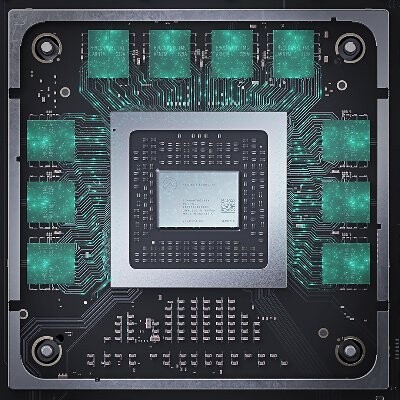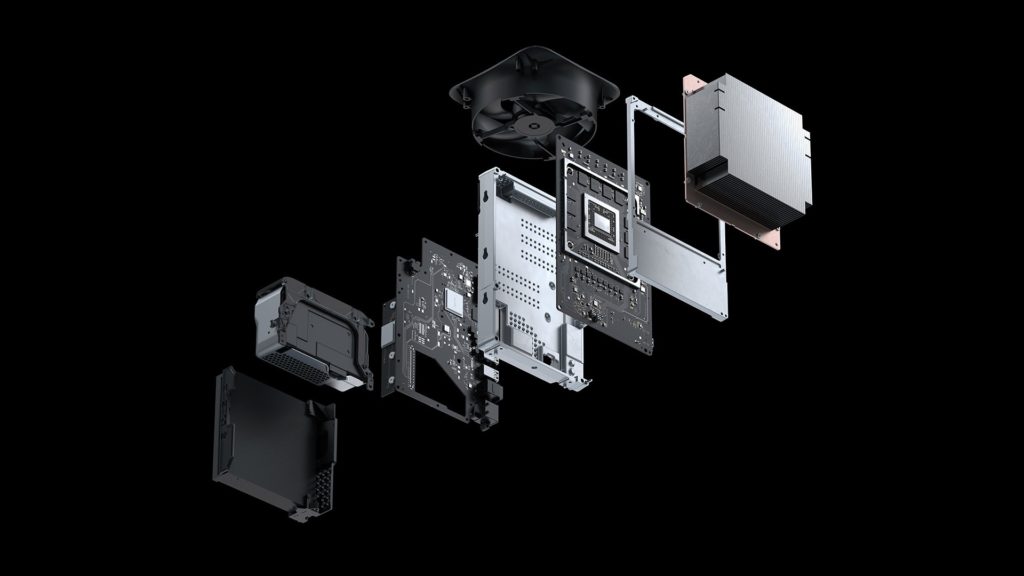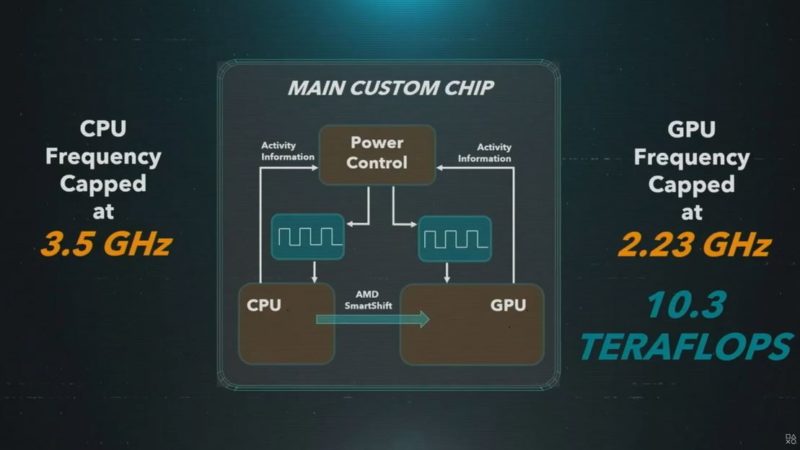A couple of days ago, Microsoft unveiled the full in-depth specifications and feature set of its upcoming next-generation console, the Xbox Series X. The announcement came as a surprise to many but was presumably pushed earlier due to the cancellation of E3 and GDC caused by the rampant Coronavirus. With no information from Sony in sight, it seemed like Xbox had gained the upper hand it so desperately needed.
However, just a day after Microsoft’s showcase, Sony bounced back and announced its own PlayStation 5 showcase to counter Xbox. The rather long and detailed showcase hosted by the lead system architect, Mark Cerny went over all the necessary specifications and in-depth knowledge about Sony’s upcoming next-generation console, the PlayStation 5.
Both the Xbox Series X and PlayStation 5 will pave the way for tons of innovation for next generation and while a console generation isn’t won on the basis of power alone (with many people considering games to be more important), the fight to gain supremacy over each other in every single aspect is what pushes these two companies to new heights.
So, which console is more powerful in the battle for pure horsepower? Let’s compare and find out.
CPU
Older generations of consoles have always lagged behind the ongoing trend leading to under-powered consoles. This is because AMD has not exactly been at the top of its game in the past. Both the Xbox One and PlayStation 4, therefore, came with custom AMD Jaguar cores clocked at under 2 GHz.
However, this time around, things are different as AMD has massively stepped up and is much more competitive in the PC space as well. So, both the Xbox Series X and PlayStation 5 take advantage of AMD’s latest Zen-2 based custom Ryzen processors.
The Xbox Series X, as revealed a couple of days ago, comes with an 8 Core/16 Thread Zen-2 based processor clocked at 3.8 GHz (without SMT). However, although the PlayStation 5 comes with the same 8-core processor as well, it is configured differently running at 3.5 GHz.
Also read: How does the Xbox Series X fare against a conventional gaming PC?
The bigger difference between the philosophies of Xbox and PlayStation becomes even more apparent though when you look even closer at the processor clock speeds. On the Xbox Series X, the clock speed has been locked at 3.8 GHz (3.6 with SMT) with no overclocking or under-clocking. According to Microsoft, this was done to sustain consistent levels of performance at all times.

On the Sony side, however, the PlayStation 5’s similar processor comes with a variable frequency meaning that it can decrease its clock speed depending on the scenario. Now, while this does mean that the PlayStation 5 can be more power efficient or potentially even pull more power at times when needed, it also means that performance levels across the board could suffer from irregularities.
So, different philosophies and different implementation of the same processor. However, the Xbox Series X still has the higher base clock speed so we’ll give this win to Microsoft.
GPU
The CPU is not the only department where AMD has stepped up its game and while it has still not quite managed to catch NVIDIA yet in the PC gaming space, the story is different when you look at next-generation consoles.
Both the Xbox Series X and the PlayStation 5 use custom AMD’s RDNA 2 based graphics which aren’t even out for PC yet. The biggest feature of these newer GPUs is the hardware level ray-tracing capabilities. In addition to that, RDNA 2 is also a much more efficient architecture as compared to the older GCN.
However, the RDNA 2 architecture is where the similarities between the PlayStation 5 and Xbox Series X end. On Xbox Series X, the GPU features 52 compute units that have been clocked at 1852 MHz resulting in 12 TeraFlops of computing power.
In comparison, Sony has adopted a very different strategy with the PlayStation 5 GPU. The PlayStation 5 GPU features 36 CUs, which is significantly lower than the Xbox Series X. Where the PlayStation 5 GPU does make up ground though is the frequency as it is clocked at a higher 2230 MHz (variable) resulting in an impressive 10.28 TeraFlops of computing power.
However, TeraFlops are not the only measurement of a console’s graphical capabilities. So, while the ‘raw power’ of the PlayStation 5 is not as much as the Xbox Series X, higher clock speeds will allow other parts of the GPU to be much faster than the Series X.
We do not have any real life examples of what difference the higher clock speeds make though on the PlayStation 5 so sadly, we’ll have to judge it with the numbers we have right now, which are TeraFlops. So, again, as was the case with the CPU, the Xbox Series X takes the win in the GPU department as well (although things could end up being much closer than we realise).
Storage & Memory
In terms of memory, both the Xbox Series X and the PlayStation 5 come with 16 GB of GDDR6 memory. However, that is the only thing that is similar between the two.
For Xbox Series X, Microsoft has chosen a rather peculiar RAM configuration with alternate 1 GB and 2 GB modules dotted around the APU. Out of the total 16 GB, 10 GB is high speed memory running at 560 GB/s, which would mostly be used for graphics while the rest will be running at 336 GB/s (out of which 2.5 GB is reserved for the OS and Kernel).
On the PlayStation 5 side though, things are much more simple with the entirety of 16 GB GDDR6 memory running at a respectably high 448 GB/s. While this does mean that it is slower than the Xbox Series X’s high speed memory on paper, we do need to remember that only 10 GB of the Series X memory actually runs at a higher bandwidth.
So, this one is actually too close to call until we actually see these things in action.
As for the storage though, the biggest advantage that both of these consoles have over last generation consoles is the inclusion of an SSD instead of an HDD. Both the Xbox Series X and PlayStation 5 feature high-speed 1 TB and 825 GB SSDs respectively which will significantly improve load times in games while also expanding the arsenal of developers with some new tricks.
Also read: The PlayStation 5 will have exclusive launch titles unlike Xbox Series X
This is the one department though where it looks like Sony has just straight up beaten Microsoft. On the PlayStation 5, the internal SSD is capable of an astoundingly high 5.5 GB/s of bandwidth. To put things into perspective, not even a fast NVMe PC SSD can match those speeds yet.
The SSD on the Xbox Series X pales in comparison to the PlayStation 5 with less than half the bandwidth at 2.4 GB/s. This difference could actually make things a lot more interesting as the PlayStation 5 could potentially have significantly faster loading times than the Series X.
As for expansion, both the Xbox Series X and PlayStation 5 have dedicated slots for SSDs (with the Xbox Series X requiring the proprietary SSD from Seagate).
Verdict
It has been made pretty clear now that both Sony and Microsoft have taken vastly different approaches when it comes to their respective next generation console. On one hand we have Microsoft focusing on raw power and grunt on the Xbox Series X while on the other hand we have Sony pushing clock speeds rather than cramming in more power.
A good analogy for this would be a V8 car engine vs a turbocharged V6, meaning that in actual real-life performance, they could actually end up being much closer to each other than we realise.
On an unrelated note though, one bummer about the PlayStation 5 is the fact that it does not have full backwards compatibility for all games like the Xbox Series X. Sony needs to double down on games much like it did last generation to stop Microsoft as the tide has somewhat shifted now.
In any case though, the next-generation war between Sony and Microsoft just got a little more exciting and we cannot wait to see how well these consoles perform against each other in real life as well.
NEXT READ: Sony’s detailed specifications of PlayStation 5 in a quick guide








